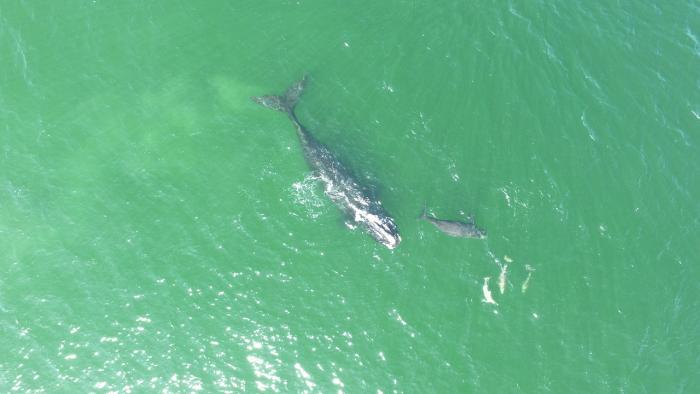Be on the lookout for right whales along South Carolina's coast!
Keep an eye out for right whales on Beaufort’s coast!

This is the time of year that 40 ton right whales typically return to Lowcountry waters as they’re passing through on their way to winter in the warmer water of coastal Georgia and Florida and to give birth.
On average, more than a dozen whales per year are spotted off South Carolina, including mothers and new calves. Scientists estimate there are as few as 450 right whales remaining, making them among the rarest marine mammals in the world. This is why it’s now very important that if you see a right whale, to report it immediately.
A sighting alert network is still in place for shipping and other interests, but here in our area it now depends on private reports being sent to the NOAA Fisheries Service. You can visit this link to report a sighting, or call 1-877-WHALE-HELP.
Northern right whales are the rarest of the large whales, 40-ton creatures whose curious two-plume breathing spray and the lack of a dorsal fin distinguish them from other whales. Hunted to the brink of extinction a century ago, the critically endangered species now number 450 to 500 in the north Atlantic Ocean. Right whales were a preferred target for whalers because of their docile nature, their slow surface-skimming feeding behaviors, their tendencies to stay close to the coast, and their high blubber content.
Every winter, pregnant females travel more than 1,000 miles from their feeding grounds near Canada and New England to the warmer coastal waters of South Carolina, Georgia and Florida where they give birth and nurse their young.
Although no longer facing a threat from whaling, mankind remains by far the greatest threat to these species: the two leading causes of death are from being struck by ships, and from entanglement in fishing gear.
Fourteen of the whales — which migrate between Northeast and Southeast coasts — were found dead in waters off Canada and Cape Cod this past summer 2017. Nearly all of them had been killed by strikes or entanglements, according to the Atlantic Veterinary College on Prince Edward Island, where the forensics took place.
Federal law requires vessels and aircraft to keep a distance of 500 yards from right whales. That rule includes drones, an increasing problem for whales. Vessels 65 feet and longer are also required to slow to 10 knots or less in Seasonal Management Areas along the U.S. East Coast, including the calving and nursery area in the southeastern U.S. Speed restrictions are in place in various areas along the mid-Atlantic from November 1 through April 30, and in the southeast U.S. calving area from Nov. 15 through April 15. For more information on seasonal ship speed restrictions, visit www.nmfs.noaa.gov/pr/shipstrike/
Right whales have turned the corner toward potential recovery from a low of fewer than 300, thanks to worldwide awareness and conservation efforts, but they remain imperiled. With so few right whales known to exist today, so few, that researchers consider every whale VITAL to the survival of the species.
The folks over at Outcast Sports Fishing were excited, to say the least when they spotted some this time last year while out fishing. “Had a group from Kentucky out today. Saw a few dozen dolphin schooling, sent the drone over to take a look, and found a couple of Right Whales. An unexpected addition to the charter as they swam right past us.” (Video below)




